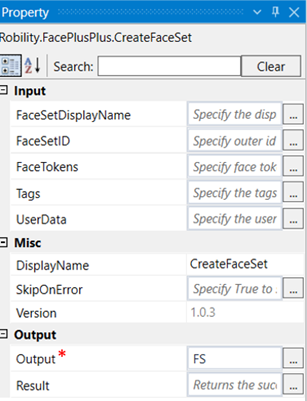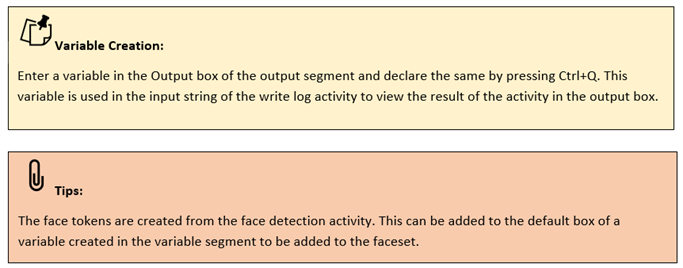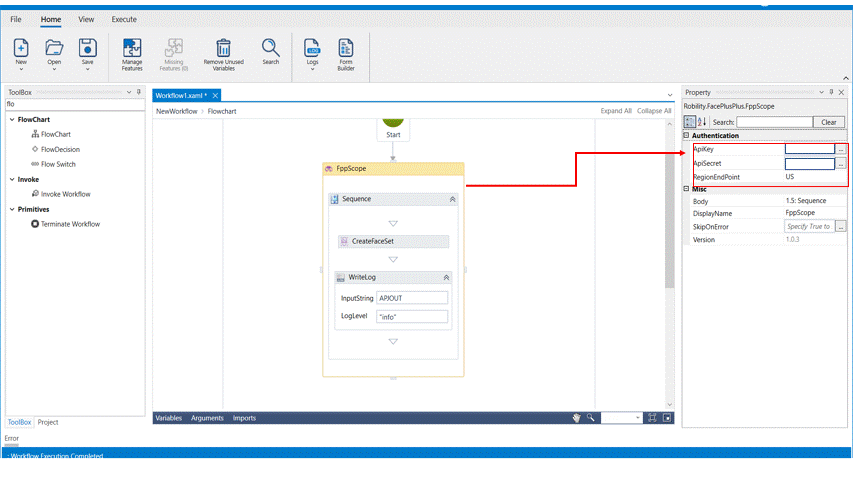Create Face Set
This activity is used to create a face set (which acts like a folder) into which a number of face tokens can be added (Which acts like a file).
Technical Reference:
|
|
INPUT |
FaceSetDisplayName: Specify the name of the face set. No more than 256 characters must be given, and it must not contain special characters ^@, &=*’” |
|
FaceSetID: Specify the custom unique ID of faceset under your account which is the Outer ID of the faceset. |
||
|
FaceTokens: Specify the face tokens required to be added to the created face set. No more than 5 tokens can be added, and it can be separated using a comma. |
||
|
Tags: Specify the face custom tag, used for categorizing Faceset, comma separated. only 255 characters can be used and must not contain special characters ^@,&=*’” |
||
|
UserData: Specify the customer user information. |
||
|
MISC |
Display Name: Displays the name of the activity. You can also customize the activity name to help troubleshoot issues faster. This name will be used for logging purposes. |
|
|
SkipOnError: It specifies whether to continue executing the workflow even if it throws an error. This supports only Boolean value “True or False”. By default, it is set to “False” True: Continues the workflow to the next step False: Stops the workflow and throws an error. |
||
|
Version: It specifies the version of the FacePlusPlus feature in use |
||
|
OUTPUT |
Output: Declare a variable here to see the result in an output box. |
|
|
Result: Declare a variable here to validate the activity. It accepts only Boolean value. This is not a mandatory field. |
*Mandatory field to view the faceset token
The following activity illustrates on how we can use the create face set activity to create a face token and get an outer ID for the same.
Example:
1. Drag and drop a FPP scope activity to the workflow.
2. Enter the API key, API secret and end point.
3. Drag and drop a create face set activity into the FPP scope.
4. Click on the activity and enter a name to the faceset ID within double quotes.
5. Enter the declared variable in the output box of the output segment.Here it is APJOUT
6. Drag and drop a writelog activity below the create face set activity.
7. Enter the same variable declared above to the input string of the writelog feature.
8. Enter the log level as “info.”
9. Execute the activity.
10. To view the detailed result of the activity, click on home---->logs---->open logs and click on the required file to open.
The bot executes the activity and gives the faceset token and outer ID in the output box.


